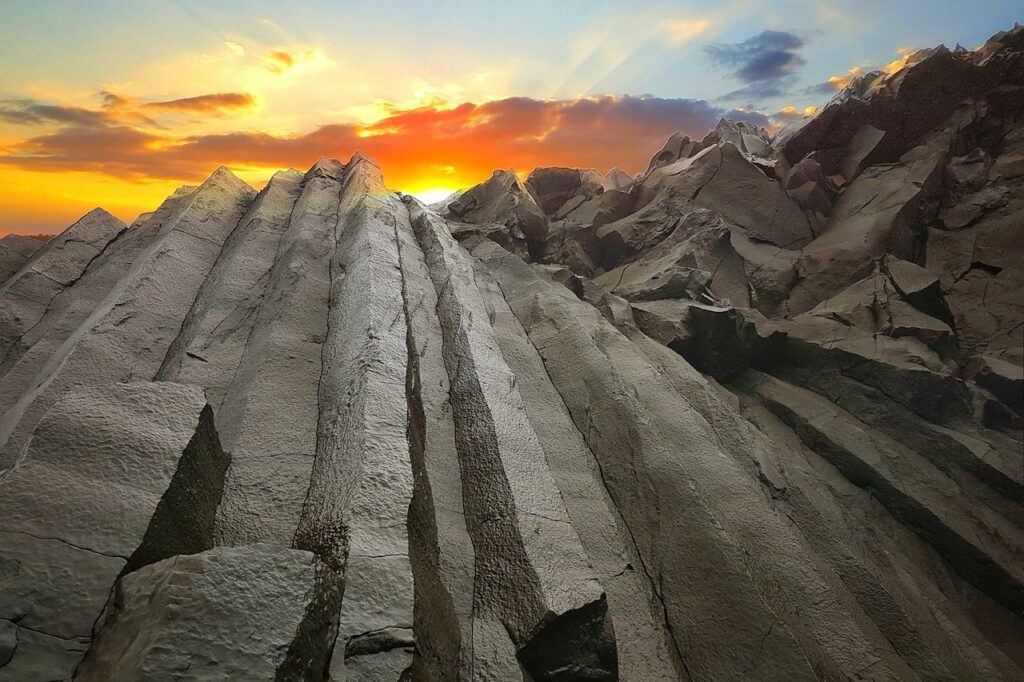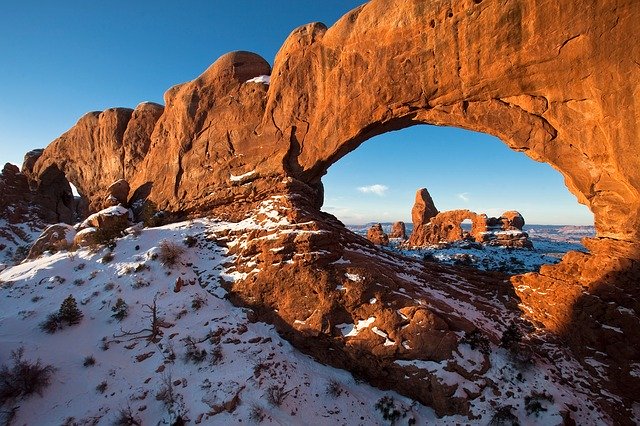There are different types of rocks that form the Earth’s crust. On the basis of origin, these rocks can be classified as-
- Igneous rocks
- Sedimentary rocks
- Metamorphic rocks
Types of rocks
1. Igneous rocks
Cooling and solidification of magma (molten material inside the Earth) form the igneous rocks. Igneous rocks have a crystalline structure and a non-layered appearance. These rocks do not contain any fossils.

Igneous rocks are said to be acidic if they have high silica (SiO2) content. Acidic rocks have a lighter appearance and a low density. Basic igneous rocks have a low silica content. These rocks have a darker appearance as compared to acidic rocks.
Igneous rocks can be further classified as Volcanic or Plutonic rocks.
Volcanic rocks
The cooling of lava and tephra coming out of a volcano forms the volcanic igneous rocks. Volcanic rocks are also known as extrusive igneous rocks These rocks have smaller crystals. Some examples are Basalt, rhyolite, etc.

Plutonic rocks
Plutonic rocks also known as intrusive igneous rocks are formed when the magma solidifies inside the Earth’s crust. These rocks come to the surface after years of erosion or denudation.
The crystals of these rocks are larger as compared to volcanic rocks. Some examples are granite, diorite, gabbro, etc.

2. Sedimentary rocks
Sedimentary rocks are formed by the accumulation of sediments from different rocks or organic materials. These rocks have a non-crystalline structure and may contain fossils.
Over 70% of Earth’s surface rocks are sedimentary. However, they make less than 10% of the total Earth’s crust. Sedimentary rocks are also known as stratified rocks because of their layer formation.
These rocks are further classified as – mechanically formed, organically formed, and chemically formed sedimentary rocks.
Mechanically formed sedimentary rocks (clastic sedimentary rocks)
Clastic sedimentary rocks form when the fragments from other rocks accumulate and cement together. Some examples are sandstone, cobblestone, etc.

Organically formed sedimentary rocks
These rocks are formed when decayed materials from dead plants and animals accumulate and cement together. Some examples are limestones, coal, etc.
Chemically formed sedimentary rocks
These rocks precipitate from solutions e.g. Rock salts.
3. Metamorphic rocks
These are igneous and sedimentary rocks that change their appearance and properties under extreme heat and pressure due to the crust’s movement. Some examples are marble, quartzite, gneiss, etc.
Limestone, a sedimentary rock if buried under the Earth’s surface for millions of years can turn into marble, a metamorphic rock under extreme heat and pressure.

Read more
I am very interested in this type of topic in my education.